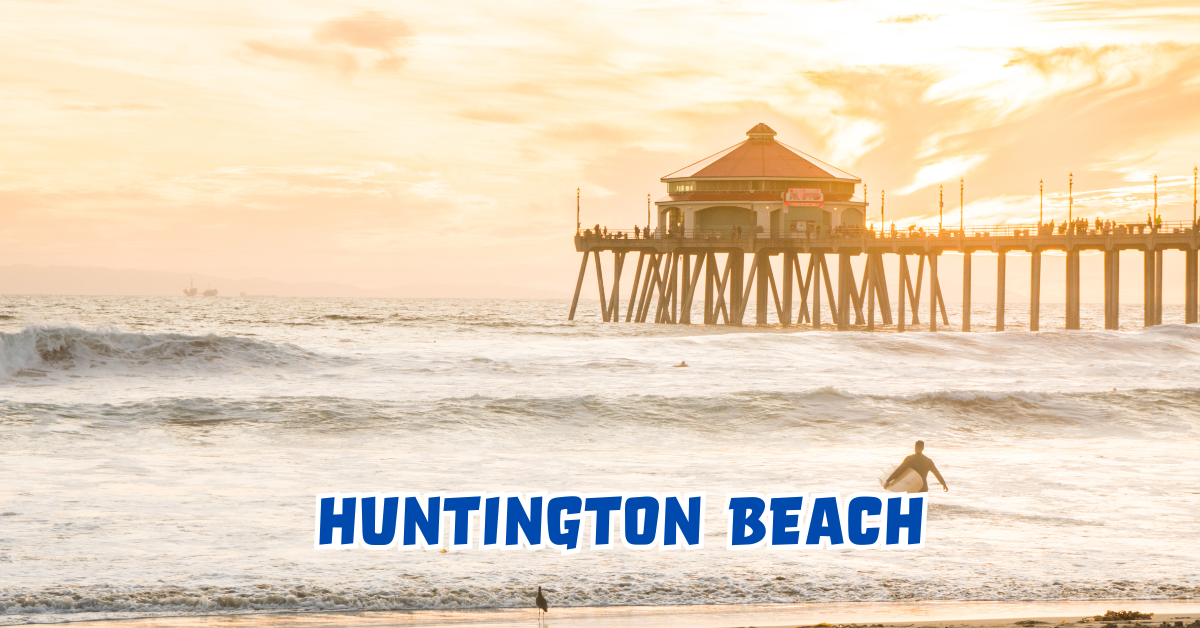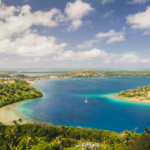Huntington Beach, known affectionately as Surf City USA, is far more than a picturesque coastal town. It is a living reflection of California’s oceanic rhythm, where the waves meet innovation, community, and culture. With its sweeping golden sands, palm-lined boulevards, and a growing urban sophistication, Huntington Beach stands as a symbol of the evolving American seaside. The city captures a rare duality — the nostalgia of old surf culture intertwined with the dynamism of modern economic and environmental transformation.
For decades, Huntington Beach was a haven for surfers and sunseekers, its reputation anchored in the easygoing California dream. Today, however, that identity is being reshaped by technological advancement, tourism development, environmental restoration, and a rapidly diversifying community. In the first few steps along its pier or in a stroll down Main Street, one can sense that Huntington Beach is no longer just a destination; it’s an ecosystem — a blend of tradition and transformation.
The purpose of this article is to take readers beyond the palm trees and beaches, deep into the true essence of the new Huntington Beach. From its economic resurgence to sustainable urban planning, from surf competitions to cultural reinvention, Huntington Beach stands as a case study of how a coastal city can thrive without losing its spirit. As local residents often say, “We don’t just live by the ocean — we live with it.”
The Historical Tides: From Settlement to Surf City
The story of Huntington Beach began long before it earned its current nickname. Indigenous tribes once lived along this coastline, dependent on the Pacific for food and connection. The arrival of Spanish settlers in the 18th century began a period of transformation, one that accelerated with California’s oil boom in the early 1900s.
By the 1950s, however, oil rigs gave way to surfboards. Huntington Beach became a cultural hotspot, drawing dreamers, athletes, and artists. Its legendary waves created a new economy — surf shops, board makers, and global competitions — transforming the city into a lifestyle brand recognized around the world.
| Era | Major Development | Defining Feature |
|---|---|---|
| Pre-1900s | Indigenous Settlements | Coastal living and fishing culture |
| 1900–1950 | Oil Industry | Economic growth, industrialization |
| 1950–1990 | Surf Boom | Rise of global surf culture |
| 1990–Present | Modern Expansion | Tourism, innovation, and sustainability |
Today, Huntington Beach’s evolution continues, balancing its surf-town soul with a growing urban infrastructure. The city’s challenge — and success — lies in keeping its laid-back character while embracing progress.
Economic Transformation: Beyond the Beachfront
While Huntington Beach’s image is inseparable from its surf culture, its modern economy tells a broader story. The city has emerged as a regional hub for technology, clean energy, tourism, and small business innovation.
The tourism industry remains a cornerstone, contributing significantly to the local GDP. But what’s changed in recent years is how the city’s leadership has diversified its growth strategy. Renewable energy initiatives, sustainable retail development, and startup incubators are now part of its economic landscape.
| Sector | Economic Contribution | Growth Trend |
|---|---|---|
| Tourism & Hospitality | 37% | Steady annual increase |
| Clean Energy & Environment | 18% | Rapid growth due to green initiatives |
| Small Businesses & Retail | 24% | Expanding through digital platforms |
| Technology & Services | 21% | Attracting young professionals |
“Surf City is now a city of ideas,” said a local business leader. “We still ride waves — only now, some of them are made of innovation.”
The New Face of Tourism: Experience Over Destination
Tourism in Huntington Beach has moved beyond the postcard image of waves and boardwalks. The modern traveler seeks authenticity — experiences that blend adventure, culture, and local engagement. The city’s approach reflects this shift, offering curated experiences such as eco-tours, art walks, and culinary festivals.
Local businesses have also embraced sustainability, adopting green certifications and promoting eco-conscious tourism. Even hotels have joined the movement, introducing renewable energy systems and ocean conservation programs.
Visitors no longer come just for sun and sand; they come for the stories, the surf culture’s legacy, and a chance to participate in the community’s forward-thinking vision.
Environmental Commitment: Protecting the Pacific Legacy
Huntington Beach has learned to balance development with environmental consciousness. After facing challenges such as coastal erosion, pollution, and the 2021 oil spill, the city has strengthened its commitment to sustainability.
New environmental policies emphasize clean water programs, renewable energy, and beach preservation projects. The “Blue Horizon Initiative,” a local effort supported by environmental groups and residents, focuses on reducing carbon emissions and restoring marine biodiversity.
Urban development now integrates green architecture, electric transport options, and coastal restoration. This city-wide ecological consciousness has transformed Huntington Beach from a surf paradise into a model of coastal resilience.
As one resident poetically remarked, “We learned that the ocean doesn’t just give — it remembers.”
Cultural Renaissance: Art, Music, and Identity
Culture in Huntington Beach is more alive than ever. Once known mainly for surfboards and sandy toes, it now hosts art galleries, street performances, and community-driven festivals. The Pacific City complex has become a cultural melting pot — an intersection of art, food, and entrepreneurship.
Local artists have transformed public spaces into canvases of coastal creativity, using murals and installations to narrate stories of migration, climate, and identity. Music festivals and open-air concerts echo across the beachfront, drawing thousands each summer.
This cultural evolution isn’t accidental. City planners have intentionally positioned culture as an engine for social unity and economic growth, blending old traditions with modern interpretations.
Education and Innovation: Preparing for the Future
Huntington Beach’s educational ecosystem has evolved alongside its economy. Schools and universities collaborate with local industries to promote innovation, environmental science, and technology. The city’s focus on STEM education has attracted a younger demographic of families and professionals.
The introduction of “Tech Coast Partnership,” a regional initiative, has positioned Huntington Beach as a key player in California’s technology corridor. It’s now not uncommon to find co-working hubs and digital startups operating within a few blocks of the ocean.
| Educational Focus | Key Initiative | Impact |
|---|---|---|
| STEM Development | Tech Coast Partnership | Boosts youth employment |
| Sustainability Studies | Blue Horizon Program | Promotes environmental literacy |
| Creative Arts | Coastal Arts Movement | Revives local culture |
This alignment between education, innovation, and sustainability ensures that Huntington Beach remains not just relevant but visionary.
Housing, Community, and Urban Planning
As more people discover Huntington Beach, the demand for housing and modern infrastructure has risen. City officials have implemented zoning policies that prioritize sustainable growth over sprawl. New residential developments incorporate solar energy, water conservation systems, and community gardens.
The concept of smart urbanism defines much of today’s planning — combining green technologies with inclusive housing policies. Public spaces are being reimagined as interactive areas where residents can connect, exercise, and celebrate local culture.
Despite its growth, Huntington Beach continues to protect its identity as a tight-knit community. Neighborhood councils remain active, and civic participation is strong.
The Beach Lifestyle: Still the City’s Heartbeat
Even amid modernization, the beach remains Huntington Beach’s soul. Surfers, joggers, and families still define the coastline’s daily rhythm. The Huntington Beach Pier — a historical landmark — continues to be both a symbol of leisure and a bridge between generations.
Surf competitions such as the U.S. Open of Surfing attract athletes and spectators from across the globe, preserving the city’s status as the epicenter of surf culture. However, today’s surf scene is also inclusive, celebrating women and adaptive athletes in the sport’s narrative.
“Surfing here isn’t just a sport,” says a lifelong resident. “It’s a conversation between us and the ocean.”
Economic Challenges and Resilience
Like any growing city, Huntington Beach faces its share of challenges — from housing affordability to seasonal employment fluctuations. Yet, its resilience lies in its adaptability. The city’s leadership has made efforts to balance economic growth with inclusivity, supporting local businesses and providing job programs for younger residents.
Post-pandemic recovery strategies have focused on diversifying revenue sources and strengthening digital commerce. The community’s proactive approach has helped Huntington Beach rebound faster than many other coastal towns.
The Intersection of Technology and Community
The smart city concept is taking root in Huntington Beach. Through digital kiosks, AI-driven traffic management, and public Wi-Fi zones, the city is redefining convenience for residents and tourists alike.
Community engagement apps allow citizens to report issues, participate in local decisions, and access city services seamlessly. These innovations create a sense of connection, where technology serves humanity rather than replacing it.
This digital transformation illustrates that Huntington Beach is not just following trends — it’s setting them.
Looking Toward the Future: Sustainability Meets Innovation
The next decade holds promise for Huntington Beach. Plans include developing electric mobility corridors, expanding renewable energy use, and continuing coastal restoration. Investments in blue economy sectors — industries connected to ocean resources — could position the city as a national leader in sustainable development.
The vision is clear: a city that grows without losing its essence. As climate challenges mount globally, Huntington Beach aims to prove that environmental responsibility and economic prosperity can coexist.
Conclusion
Huntington Beach stands today as a symbol of evolution — a coastal city that honors its past while boldly shaping its future. From surfboards to smart systems, from golden sands to green initiatives, every wave that crashes along its shore carries a message of balance, resilience, and reinvention.
The beauty of Huntington Beach lies not only in its scenery but in its philosophy — that progress and preservation can flow together like the tide. It remains a living, breathing embodiment of the California dream, renewed for a modern generation.
In the words of one local artist, “We don’t just ride waves here. We create them.”
FAQs
Q1: Why is Huntington Beach called “Surf City USA”?
Huntington Beach earned its title due to its consistent waves, surf culture, and hosting of world-renowned surfing competitions.
Q2: What industries drive the economy of Huntington Beach today?
The economy is powered by tourism, clean energy, technology, small business innovation, and creative industries.
Q3: How is Huntington Beach addressing environmental issues?
The city has implemented sustainability programs focusing on coastal restoration, renewable energy, and eco-friendly development.
Q4: What makes Huntington Beach culturally unique?
Its blend of surf heritage, modern art, diverse communities, and music festivals create a distinct, evolving cultural identity.
Q5: What does the future look like for Huntington Beach?
With smart city initiatives, sustainability plans, and digital innovation, Huntington Beach is poised for inclusive and responsible growth.











